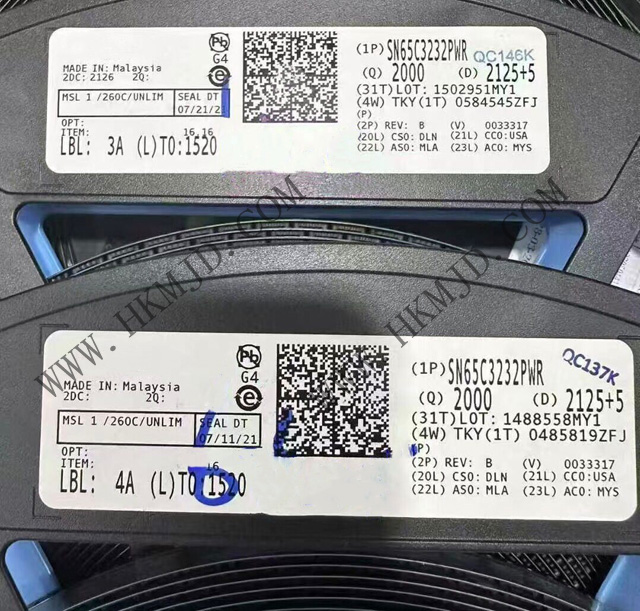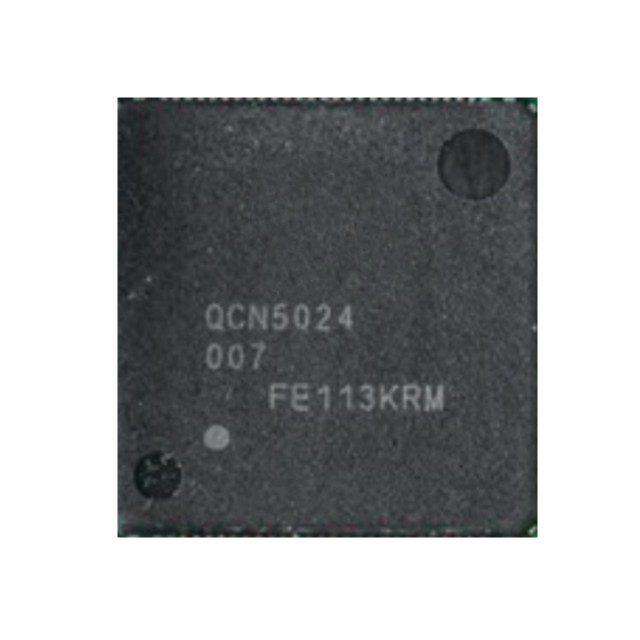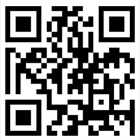Welcome Here Shenzhen Mingjiada Electronics Co., Ltd.

sales@hkmjd.com

sales@hkmjd.com

Service Telephone:86-755-83294757
 Latest Information
Latest InformationHealth monitoring under the COVID-19 pandemic and the high incidence of chronic diseases in a fast-paced life have led to an increase in the shipments of health management monitoring equipment every year; the mature promotion of 5G technology, and the…
Health monitoring under the COVID-19 pandemic and the high incidence of chronic diseases in a fast-paced life have led to an increase in the shipments of health management monitoring equipment every year; the mature promotion of 5G technology, and the sharp increase in demand for rehabilitation and elderly care have made smart medical and telemedicine in the market. Large hospitals are gradually popularized... The health IoT industry, which integrates medical health and IoT technology, has attracted the attention of governments and capital due to its close-to-consumer and high-frequency application scenarios.
Healthcare IoT
In the 100 billion market, Xiaohe shows sharp corners
In the post-epidemic era, smart health IoT has become the portal for physical monitoring data and health management services. According to Markets and Markets analysis, the global IoMT market size in 2020 is 72.5 billion US dollars, and the installed volume of medical IoT devices is 161 million. From the perspective of market output and connected devices, health IoT is still in the new stage in the trillion-dollar IoT industry. . However, under the influence of the new crown epidemic, experts predict that the global medical Internet of Things market size is expected to reach 188.2 billion US dollars in 2025. The China Academy of Information and Communications Technology believes that in the future, the medical Internet of Things is expected to become the second largest Internet of Things application field in my country after the Industrial Internet of Things.
According to IDC statistics, the number of hardware components of the current medical and health IoT is huge (30.6%), and smart medical equipment is also the largest segment in the IoMT market (33%). In October 2020, the "Smart Health Care Products and Services Promotion Catalog" issued by the three ministries and commissions of the State Council clearly displayed five major categories of wearable health management equipment, portable health monitoring equipment, self-service health testing equipment, intelligent elderly care monitoring equipment, and home service robots. There are a total of 118 health IoT products in the category.
In September 2014, the heart rate monitoring on the first-generation Apple Watch set off a new wave in the health management industry. Since then, the health management function has become a major selling point of smart wearable devices. In addition to Apple, Huawei, Huami, Lexin Medical, Jinyidi and other big manufacturers to snatch the health smart wearable device market, veteran health IoT manufacturers WITHINGS, Braun, Philips, Medtronic, etc. have also participated in it for a long time. Many devices have implemented intelligent monitoring including sleep, body fat, blood pressure, heart rate, ECG, blood oxygen, blood oxygen and other indicators.
In China, the awakening of the awareness of health diversification meets the wave of consumption upgrading. my country's per capita medical consumption expenditure has soared at a rate of 9.6% per year, and is about to break through the per capita annual medical expenditure of 2,000 yuan. The "Healthy China Action 2019-2030" plan proposes to "encourage the development and promotion of artificial intelligence and wearable devices for health management, and use big data to improve the public's self-health management capabilities".
The repercussions of the favorable policies projected on the market are the shipments of 140 million units in my country's wearable market in 2021. In terms of medical device registration, as of the end of 2021, the Food and Drug Administration has at least 41 medical wearable products that have obtained the second-class medical device registration certificate, 85% of which were approved in 2019 and later, and more than half of the products come from Goertek, Shenzhen Jinyidi, Soth Suzhou and other domestic manufacturers. The consulting agency predicts that the scale of wearable devices in my country will reach 144.16 billion yuan in 2025, of which the output value of professional medical-grade smart wearable devices will double from 2020 to 33.6 billion yuan.
Health monitoring equipment is often used to improve the efficiency and accuracy of diagnosis and treatment. By monitoring the behavior and health status of patients in real time, medical professionals can simplify the process of processing information in the clinic and make timely interventions. According to GlodmanSachs' classification and prediction of the vertical scenarios of medical and health IoT, 45% of the future revenue of health IoT will come from remote patient monitoring, of which the largest share is in the segment of chronic disease management. Telemedicine accounted for 37% and 18% of the market share came from behavior modification.
In terms of elderly care monitoring equipment, my country's "9073" elderly care pattern is destined to be the main battlefield of smart elderly care in the future, and the market for household intelligent medical equipment will usher in an explosion. To be applied to home care scenarios, the supplier's IoT solution should cover basic functions such as automatic collection of remote physiological indicators, remote health assessment and intervention, geriatric disease monitoring, accurate indoor positioning in home scenarios, and motion trajectory recognition.
Status of Health IoT Applications
The traffic entrance has soared, and the core products are lacking
The research and development of healthy IoT spans many fields such as industrial design, chip technology, display technology, hardware research and development, software system, AI algorithm, sensing technology, biometrics, communication technology, intelligent manufacturing and cloud computing big data. In other words, the particularity of the medical industry directly affects the research and development and product life cycle of IoT devices. First, it requires the professionalism of cross-industry technology, and second, it requires sufficient security and stability, which means that equipment manufacturers need a lot of manpower for research and development. , time cost, considering the cycle and investment, most manufacturers will choose to cooperate with mature technology companies to develop healthy IoT products.
Home medical care and wearable devices are common application scenarios of health IoT, and the current domestic mainstream health IoT companies also start from here.
Yuyue Medical, which is well-known at home and abroad for its breathing oxygen concentrator, has a revenue of up to 40% of home medical products, diabetes and other chronic disease management solutions, and various smart home electronic detectors are the core products of Yuyue Health IoT.
Huawei has been focusing on sports bracelets since 2014. Today, the shipment of smart health wearable devices ranks second in the global market. In 2020, Huawei cooperated with Goertek and obtained the second-level medical device certification, and completed the consumer-grade medical device. In addition to the mainstream ECG heart monitoring function, non-invasive blood glucose, blood pressure, atrial fibrillation and other data collection and detection have been added.
The Xiaomi bracelet supply chain ecological enterprise Huami Technology changed its name to Zepp Health overseas, emphasizing its focus on health + technology. Health and noise reduction functions are integrated into wireless headphones.
Benefiting from the changes in global consumption trends in recent years, Lexin Medical's revenue in 2021 will reach 1.82 billion yuan, a year-on-year increase of 36.2%. Lexin Medical, which started from sensor manufacturing, regards home remote health management (RPM) and medical-grade smart wearable devices as the two basic strategies of health IoT, and is positioned as a world-class health IoT and digital health service provider. Its health IoT products Including smart electronic sphygmomanometers, electronic health scales, fat measuring instruments, and medical-grade smart wearable devices.
Although there are medical devices such as health watches, smart electronic scales, electronic sphygmomanometers, and even phenomenon-level traffic portal hardware devices in the hardware market, compared with the application of the Industrial Internet of Things, it can promote the intelligent and multi-scenario development of medical and health IoT. Core products are still scarce, and the market needs to be developed urgently.
Status of Health IoT Technology
Sensing technology remains the backbone
At the perception layer, the perception of health IoT still relies on various information sensing devices and intelligent sensing systems, such as RFID, chips, sensors, etc.; at the transmission layer, it is mainly used in near-field connection, long-distance communication and wide area network communication. ; At the platform layer, it is mainly to realize the connection of massive IoT devices, the adaptation and conversion of different protocols, the digitization of personal health records, and the distributed storage and computing functions; in application scenarios, health IoT is often used in remote health consultation, home health care There are five scenarios: pension, chronic disease management, personalized health management, and sports health assistance.
Sensors and core sensing technologies are widely used in health IoT. As built-in components of terminals, sensors obtain information in remote monitoring, home care, sports and fitness scenarios, such as inclinometer sensors used to monitor falls of patients and the elderly; Ultraviolet ambient light sensors for fitness and health care electronic equipment; heart rate, ECG, respiration, blood oxygen, blood pressure and other sensors for wristband watches and home medical equipment; temperature and humidity sensors for specific medical environments; and continuous monitoring of blood sugar , Tiny implantable medical MEMS sensors that monitor nerves...
L'Oreal UV Sensor
The integration of barcode technology and the field of health has been reflected in the prevention and control of the new crown epidemic. In 2020, the state released three personal health code protocol standards. Health codes are now widely used in personal health information acquisition, epidemic information statistics, and regional personnel flow management. etc. scene.
RFID technology is widely used in the medical field due to its characteristics of long-distance identification, writing information at any time, and large storage capacity. RFID technology has unique advantages in scenarios such as personnel health management, patient care, drug inventory management, and drug anti-counterfeiting. Management of pharmaceutical companies, medical institutions and medical device manufacturing processes. At the same time, RFID also shows great potential in the field of intelligent elderly care. Through RFID, it is possible to locate the route of the elderly's activities, and to quickly identify personal information in emergency hospital admissions, identify personal items in nursing homes, and file motion records, creating possibilities for intelligent elderly care.
Communication and other assistive technologies:
Bluetooth and NFC have been widely used in protocols for health devices such as bracelets, weight scales, heart rate monitors, electronic blood pressure monitors, thermometers, and continuous blood glucose monitoring.
ZigBee technology currently supports pulse oximeters, blood pressure monitors, thermometers, weight scales, blood glucose meters, insulin pumps, peak expiratory flow monitors, cardiovascular health and activity monitors, strength fitness equipment, drug monitors and other health equipment.
The iteration of Wi-Fi-6 plays an important role in remote health consultation and medical imaging assistance. The transmission of 4K/8K ultra-high-definition video brings clearer video consultation pictures and image colors, which means that Wi-Fi at least carries The transmission bandwidth of 50M~100M makes smooth and clear telemedicine possible, which is a revolution for the video consultation service capability of the medical and health industry.
NB-IoT&5G: 5G has unique advantages in high bandwidth, low power consumption, low latency, massive device access and security, which can effectively make up for the technical deficiencies of Wi-Fi, LoRa and 4G. The advantages of high efficiency, ultra-low power consumption, ultra-low cost, and more connection capacity of NB-IoT technology can enable wearable devices to have better battery life and achieve low-latency transmission of telemedicine.
In terms of enabling technology, 4k/8k and other FHD technologies, artificial intelligence diagnosis, and breakthroughs in blockchain technology provide scenarios and imagination for the innovation of the medical Internet of Things industry.
Health IoT Trends
The hardware market exerts force, faces the pain of fragmentation, and extends the application of scenarios
1. The technical capabilities of equipment manufacturers have been upgraded, and the business of medical institutions has undergone intelligent transformation
More and more smart connected devices are appearing in the diagnosis and treatment business, such as a single smart device implanted in a patient, connected insulin pump and smart infusion pump. The health IoT market is in its infancy, and the IoT perception layer will be applied in the medical industry in the next 5 years will maintain rapid growth.
2. Crack fragmentation: from network device optimization to user-centric scenario solutions
In the future, medical institutions and IoT hardware manufacturers will have in-depth coordination. In addition to strengthening the inherent equipment capabilities, they will also develop new medical IoT products based on the medical institutions themselves to provide intelligent diagnosis and treatment and business scenarios. At present, most medical institutions use medical information systems such as HIS Saas for in-hospital administrative business management. The intelligent improvement of medical system operation and equipment utilization efficiency is still in the primary stage, and market user education also needs to be improved urgently. In the future, in-depth IoT solutions for medical subjects such as patients, doctors, nurses, and dean managers will be widely promoted.
3. Wearable device trend: professional upgrade, scene extension
Smart wearable devices are tilted from basic consumer-level applications to smart health management applications. In addition to basic physical index detection, they can also shine in professional fields such as disease treatment and telerehabilitation. The opportunities for the integration of professional services in the fields of health management institutions (physical examination), gyms, primary and secondary education and other fields will be greatly enhanced.
4. From software to hardware: from Internet cloud medical treatment to hardware popularization
The epidemic has led to the growth of users and online data of Internet medical (telemedicine) cloud platforms such as Dingxiangyuan, Ping An Good Doctor, Good Doctor Online, and Chunyu Doctor, but most of them use video or graphic switching terminals to provide medical scenarios. Without the in-depth realization of the popularization of smart medical care, the industry urgently needs a heavy technical support similar to 5G and FHD for video consultation to promote the popularization of IoT smart hardware devices among medical institutions and users.
The dividends of the health industry have already existed. The continuous fermentation of the new crown epidemic has magnified the opportunities of IoMT and health IoT into the spotlight. Traditional medical device manufacturers and giant enterprises are trying to increase their share of the pie. The 100 billion market needs to be renewed urgently. Barriers and unknown pain points, perception technology, communication protocols, interoperability platforms, government and enterprise support, and market education will all push the intelligence of the human health industry to a new peak.

Time:2025-09-17
![[TI] Amplifiers——Mingjiada Recycle TI Comparators, Operational Amplifier, Instrumentation Amplifier](/upload/202509/17/202509171436157487.jpg)
Time:2025-09-17
![[ST] Microcontroller MCU——Mingjiada Supply ST STM32 Series MCUs, SPC5 Series MCUs](/upload/202509/17/202509171410432202.jpg)
Time:2025-09-17

Time:2025-09-17
Contact Number:86-755-83294757
Enterprise QQ:1668527835/ 2850151598/ 2850151584/ 2850151585
Business Hours:9:00-18:00
E-mail:sales@hkmjd.com
Company Address:Room1239, Guoli building, Zhenzhong Road, Futian District, Shenzhen, Guangdong
CopyRight ©2022 Copyright belongs to Mingjiada Yue ICP Bei No. 05062024-12

Official QR Code
Links: